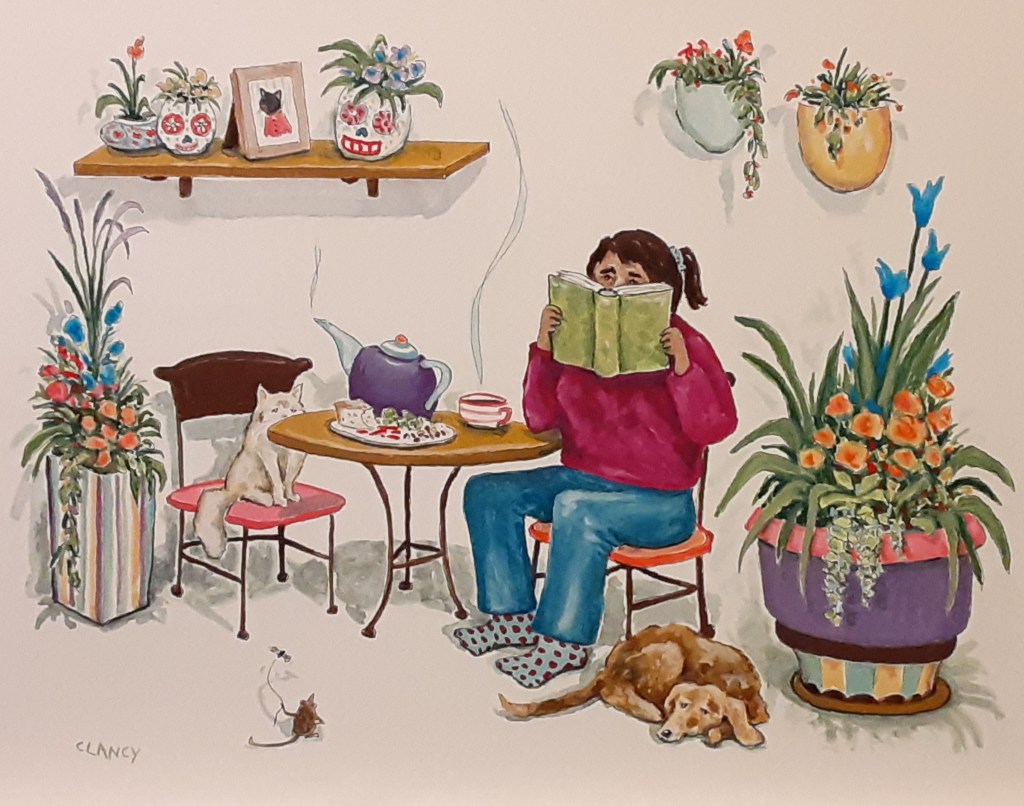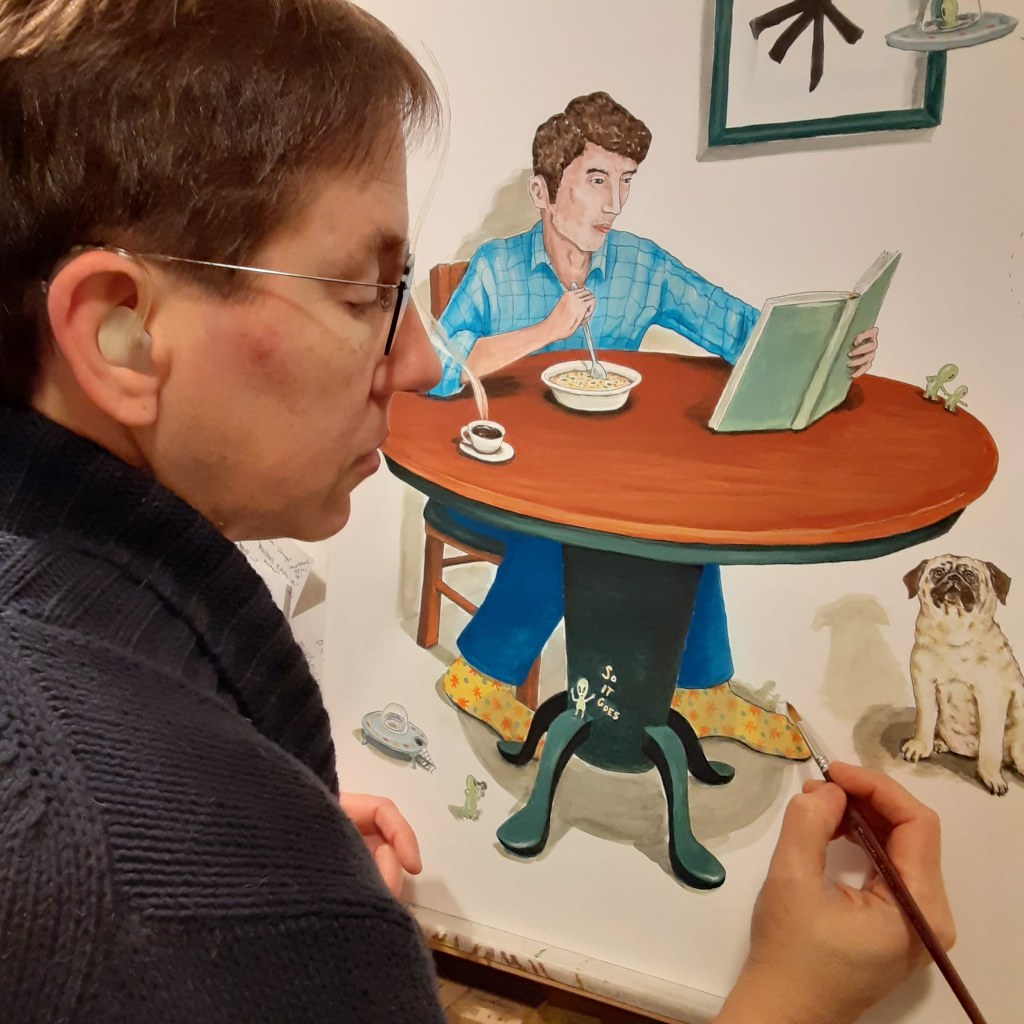gouache
-

Midnight in the garden of veg and cheese
This is the fine art piece I said I was working on in my last post. It’s titled “Midnight In The Garden Of Goode And Weeval”. If you look closely at the art you can see a plate of veg and cheese. One recent evening I made a spread of assorted veggies and cheeses for…
-
the sacred stew dance
It’s finally gotten to be “soup and stew” weather here in the Pacific Northwest! When I was making a stew the other day I realized I was twirling, aka dancing, in the kitchen; popping quickly between the stove, the counter where I was chopping veg, the pantry and the refrigerator. I was so excited about…
-
absurd things on rainy days
For this new painting I’ve combined several thoughts together: rainy day activities, the contrast between rainy Pacific Northwest and the Southwestern (USA) desert region (Arizona), and the Bonneville Dam’s fish ladder. I’ve found the fish ladder fascinating – here’s a video of it – and have done some fun sketching at the Bonneville Dam trying…
-
mixing the mundane and magical
I’ve been reading “Whiskey Galore” by Compton Mackenzie. Once again I realize that I enjoy the mix of real-life and a whimsical imaginative look at real-life. Mackenzie used a real-life event as the inspiration for his whimsy and did the mix extremely well. Already I’ve been doing some of this mixing in my work –…




